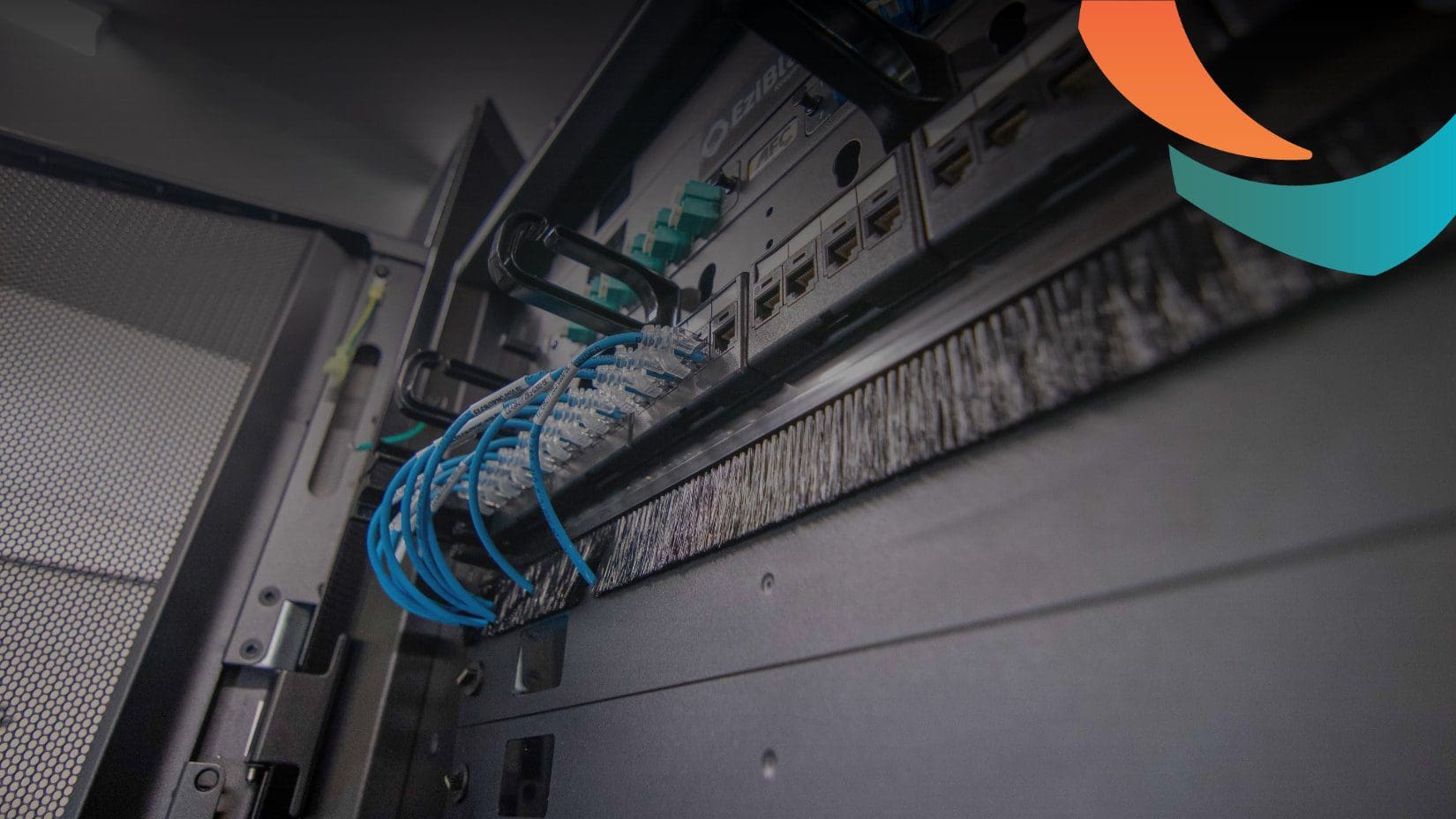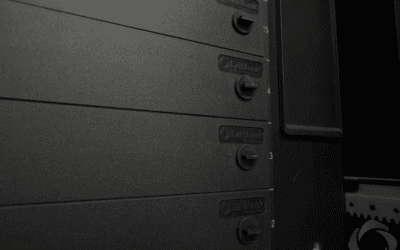Airflow Management Products
Did you know that proper airflow management is essential for keeping your data center cool and running efficiently? If not, you’re in for a surprise!
In this article, we will discuss what airflow management is and why it’s important, as well as some of the airflow management products available on the market to help you manage your data center. Stay tuned!
In the article:
[—ATOC—]
[—TAG:h2—]
What is airflow management?
Airflow management is the process of regulating and managing the airflow through a data center. The main purpose of airflow management is to expel hot air and avoid bypass airflow so that servers are most efficiently kept cool. Without proper airflow management, your data center can become extremely hot and the equipment can become damaged and even fail.
Why is airflow management important?
Airflow management solutions are essential for keeping your data center cool and maintaining the effectiveness of equipment. This may also improve the performance of your data center and keep energy costs low.
To understand why airflow management is important, there are a few terms you should wrap your head around:
Bypass airflow
Bypass airflow is a phenomenon where cooled air does not reach the server racks where it is supposed to due to a cool air leak. Understandably then, a major goal of airflow management is to limit bypass airflow and improve the operational efficiency of cooling systems. Air leaks can occur from gaps in cabinets, through holes for wires or through openings in the surrounding walls or doors. To stop air leaks, it is important to choose specifically designed products that are the right fit for your data center.
Hot spots
A hot spot is an area in a data center where the temperature is significantly higher than the rest of the data center. Hot spots usually result from improperly cooling hot equipment exhaust air, or even from rising hot air. They can cause the servers in that area to overheat, which leads to downtime and data loss. If you find hot spots in your data center, one solution is installing additional cooling units to overcome their formation.
Alternatively, it may be better to address airflow management. Installing products like walls, blanking panels or brush panels (which we will go into more shortly) may be a cheaper and easier solution.
You should also check how your servers are arranged in the data center to ensure they are not blocking airflow. There may also be a better server layout that could help to improve cooling efficiency.
Empty space
Another goal of airflow management is to minimize empty space. Empty or unused spaces can be a huge problem because they lower the energy efficiency of data centers by devoting power to areas that do not host equipment that needs cooling. Empty spaces can also promote hot spots, which can lead to the servers in that area overheating. In order to reduce the amount of empty space in your data center, you should consider installing airflow management solutions to minimize empty space.
Layout Solutions
Aisle containment
Aisle containment is the process of sectioning off a specific area of a data center in order to better manage the airflow. With respect to data centers, aisle containment refers to the physical separation of hot and cold aisles. By separating these aisles, and containing one, you can prevent the mixing of hot and cold air, which would otherwise lead to inefficient cooling.
There are two main types of aisle containment.
Hot aisle containment
With hot aisle containment , servers are placed in the cold aisle and the exhaust air is directed into the hot aisle and into cooling units via barriers such as curtains or baffles or with fans. Doors are also placed at the end of the hot aisle. This helps to keep the servers cool by maximizing the interaction between cooling units and the hot air.
Hot aisle containment is generally the most common form of aisle containment but may be more expensive or difficult to implement into an existing data center.
Cold aisle containment
With cold aisle containment , the servers are similarly placed in the cold aisle and the exhaust air is directed out to be cooled. But here, doors are instead placed at the end of the cold aisle and a covering over the roof. Like hot aisle containment, cold aisle containment also ensures servers are kept cool while energy efficiency is maintained.
While less common, cold aisle containment is also a suitable solution for improving the effectiveness of cooling units by preventing the mixing of hot and cold air.
Raised floors
Raised floor data centers are becoming increasingly common due to their many benefits. Raised floors help to improve the airflow in a data center, which can help to keep the servers cool. Additionally, raised floors provide an easily accessible space beneath the floor for cabling and piping, which can help to keep your data center organized and running efficiently.
There are a number of products which may enhance the effectiveness of raised floors such as brush panels so stay tuned to find out more.
Data Center Airflow Management Products
There are a number of airflow management products available, so it is important to be knowledgeable about which may be best suited for your data center. Choosing the right products will be best to optimize airflow and improve efficiency within your data center.
Blanking panels
One of the most important airflow management products is blanking panels. A blanking panel helps to direct the airflow and prevent it from being blocked by servers or other equipment. Additionally, blanking panels provide a means of organizing the cables and piping in a data center.
Blanking panels are thin metal plates that are installed in the front or rear of cabinets to fill the open spaces between servers. By filling these spaces, you can help to improve the airflow through the data center and prevent bypass airflow. Blanking panels also help to keep the area around your servers cooler, which can extend the life of your equipment.
There are a number of different types of blanking panels available on the market, so it’s important to choose the right one for your needs. You want to make sure that the panel is large enough to cover the entire opening in your data center. Additionally, you should consider the thickness of the panel. The thicker the panel, the more protection it will provide against heat and noise. The type of material used in the panel is also important, as you want to make sure that it is durable and can withstand heavy use.
By considering these different aspects, you can find a blanking panel that is best for you.
Wall panels
Wall panels are another important part of airflow management. These help to direct the airflow by controlling air recirculation in a hot or cold aisle containment system, and can be integral in preventing bypass airflow.
There are a number of different types of wall panels available on the market, so it’s important to choose the right one for your needs. Some factors to consider when choosing a wall panel include rack size and budget. One budget-friendly option is choosing a wall panel that can be rotated to suit the width of your rack.
Brush panels
Brush panels are another type of airflow management product. They are made of metal and have a series of brushes that help to block unwanted flow of air. Brush panels are a great option for data centers that have a lot of equipment installed on the walls, as they help to keep the airflow moving around the room.
There are two main types of brush panels.
Vertical brush panel
- These are great for blocking vertical space in your cabinets and preventing the unwanted movement of air
- Can support existing cabling for easy installation into an existing data center
Horizontal brush panel
- These are great for sealing horizontal gaps such as at the bottom or between server racks
- Similarly, support existing cabling within your server cabinets
Brush grommet
Brush grommets, or floor grommets, are another important product. These are made of metal, commonly aluminium, and have rows of brushes to seal gaps. These have raised floor applications, as by sealing gaps in the raised floor they prevent air linkage and control bypass airflow therefore keeping cooling air underneath. By sealing openings, floor grommets also prevent dust from harming equipment.
There are a number of brush grommets available so see which best suits your needs.
Doors
Doors are another important product, particularly for use in aisle containment. They help to direct the airflow and prevent it from being blocked by servers or other equipment.
When choosing a door, it’s important to consider the size of the doorway. You want to make sure that the door is large enough to cover the entire opening. You should also consider a door that is lightweight, for easy installation, but robust enough for its purpose.
What airflow management products are right for you?
Airflow management products are an important part of keeping your data center running smoothly. While there are many different products on the market, by choosing what is right for your data center, you can help to improve the efficiency of your data center by properly directing airflow.
We have a range of data center products and cooling solutions to suit your needs. You can find out more information about them here.




